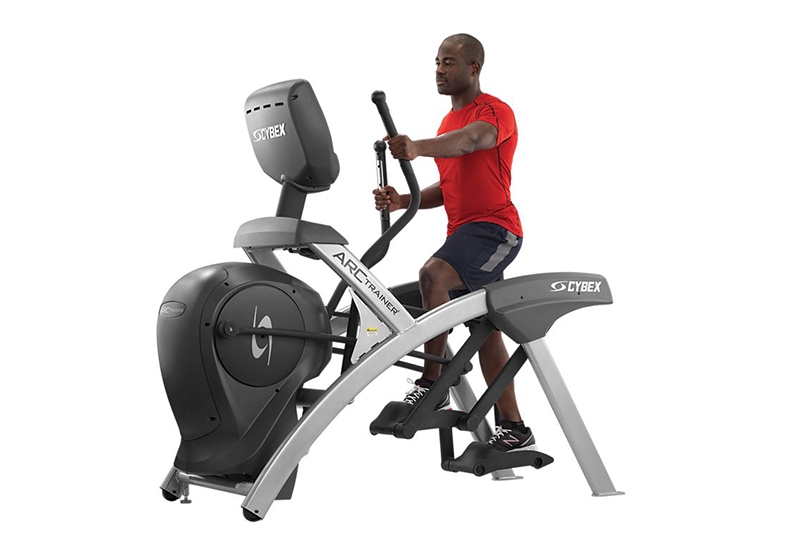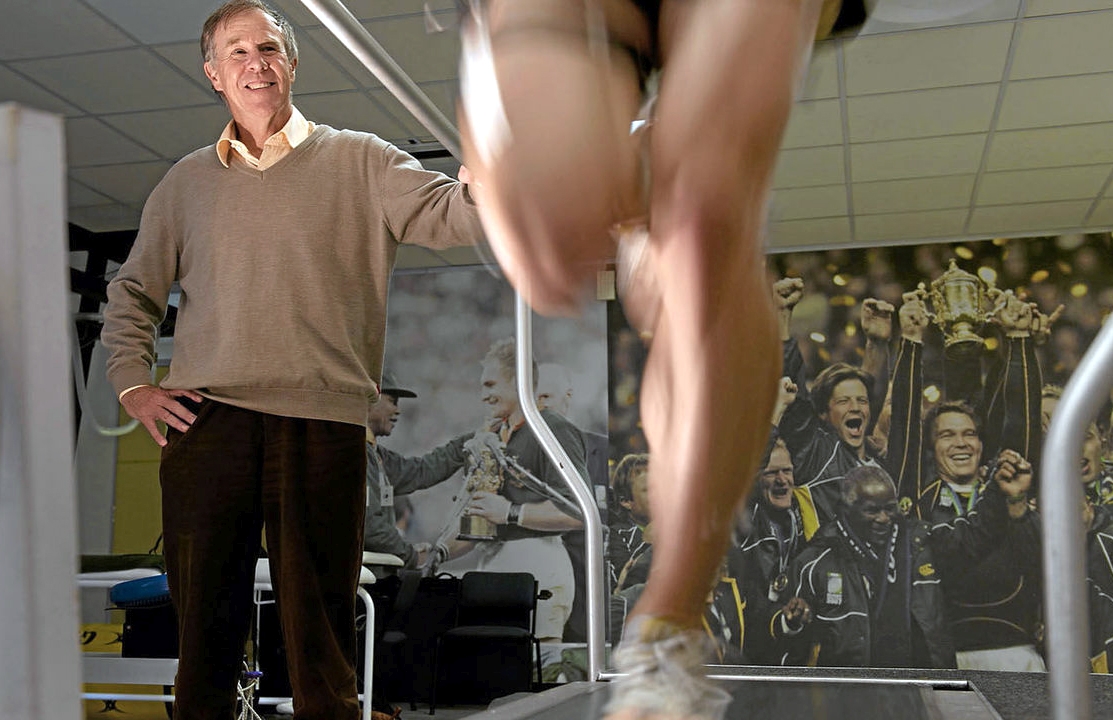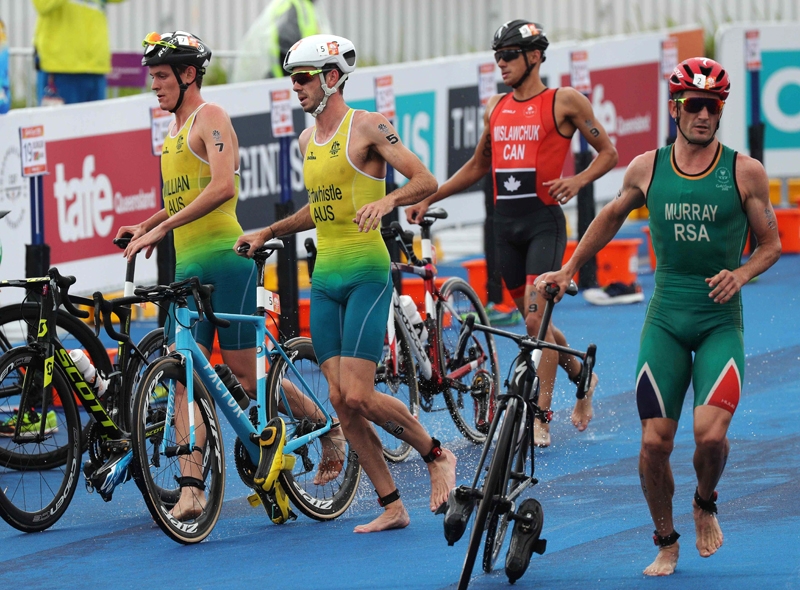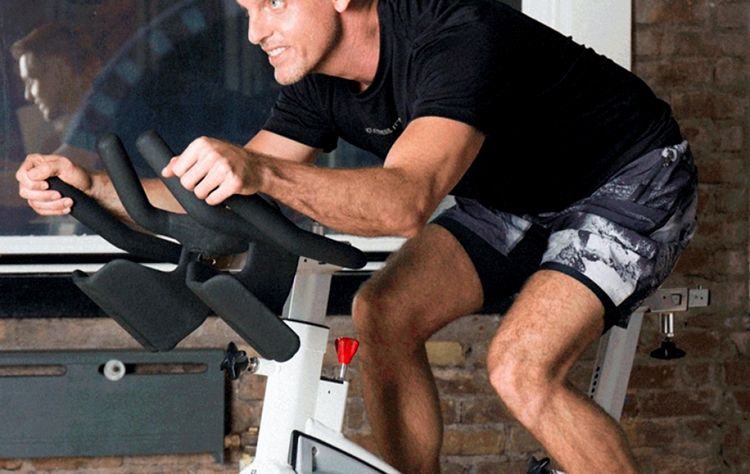You are viewing 1 of your 1 free articles. For unlimited access take a risk-free trial
Cross training: time invested or time wasted?

John Shepherd looks at the pros and cons of cross training for runners and other endurance athletes
Overuse injuries are a common occurrence in endurance sportsmen and women. Marathon runners whose diaries include 100-mile weeks, week after week, subject their bodies to considerable potential wear and tear. It’s no wonder therefore that injuries such as Achilles tendon and knee problems can occur. Yet many runners (and other endurance athletes) are often wary of cross-training – ie of including a different discipline into their training to spread the load and potentially reduce repetitive strain type injuries That’s because they fear that the non-specific activity will be detrimental to their main activity. In this article therefore, we will consider the potential benefits of cross-training on markers of endurance performance, such as aerobic capacity. And although the focus will be on runners, there will also be take-home value for cyclists and other endurance athletes.
Muscle damage
When we exercise, we can expect a degree of muscle damage, which is dependent on the duration and the intensity of that exercise. Muscle proteins are broken down and it’s in the recovery process when these proteins will repair. However, too much muscle damage created by repetition of tough workouts and insufficient recovery can impair adaptation and even lead to injury. Cross-training can go some way towards limiting muscle damage, which therefore offers better recovery and greater opportunity for more intense sessions to be performed.This is not just theory – there’s hard evidence too. In one study, researchers looked at the effects of sub-maximal anaerobic threshold treadmill and cycling workouts among triathletesAppl Physiol Nutr Metab. 2014 Mar;39(3):340-4. In particular, they measured the release of indicators of muscle damage such as serum S100B, creatine kinase, and myoglobin. They found that the markers of muscle damage were much higher after the run test than the cycle one, even though the intensity was the same.
These results are perhaps not that surprising given that the impacts involved in running are known to lead to muscle damage. However, the value of the research goes beyond this in that it could mean that greater volumes of work could be performed on a bike compared to running with less resultant muscle damage, something that case study subect Huw Jack Brassington (see case study below) can personally attest to.
Professor Tim Noakes: Running guru and advocate of cross training

Cross training modes and performance
*Elliptical bike training
Elliptical bikes such as the ‘ElliptiGO’ (see figure 1) are a strange hybrid – they look a bit like bikes, but involve a running type of action to propel them. ElliptiGOs are a little heavier than normal bikes but they are easy to ride and more stable than may at first appear. Although you may not be familiar with them, ElliptiGO bikes are used by some of the world’s elite endurance athletes, for example, 2004 Olympic marathon silver medallist, Meb Keflezighi, ultra runner Dean Karnazes and, perhaps the greatest distance runner of all-time, Haile Gebreselassie. The multi-world and Olympic champion has described the ElliptiGO as “the ultimate cross-training tool for runners.” But what does the sports science say?Figure 1: Elliptigo Bike

One study compared the physiological outcomes of Elliptical bike training and run training in experienced runnersJ Strength Cond Res 30(11): 2998-3006, 2016. Two 4-week periods of ElliptiGO-only training were performed by one group. Another group performed their run training as normal. Before the intervention and at four and eight weeks, all the runners were tested for their VO2max (aerobic capacity), ventilatory threshold (the point when your breathing rate rises dramatically for only a small increase in pace), running economy (how efficiently the runners were using oxygen) and their 5000m performance.
The results showed that there were no significant group differences for these measures at any time point. In other words, the EliptiGO-only training had yielded similar physiological and performance compared with run-only training. To date little other research exists on ElliptiGO use, apart from one study showing that it was equally effective at producing strength gains in the lower body as upright and recumbent cyclingInt J Sports Phys Ther. 2016 Apr;11(2):190-200.
*Aquatic treadmills
Aquatic treadmills are another option available to runners who want to cross-train. And as with the ElliptiGO, this mode of cross-training will significantly reduce the impact forces on the body. But do the effects of being submerged change the ‘on-land’ running kinematics, such as foot-strike? And are these effects longlasting and potentially detrimental to running if they do result?Fifteen competitive distance runners were assigned either to a land-based treadmill group or an aquatic treadmill groupJ Sports Sci 2016 Nov 17:1-9 (EPub ahead of print). Each was tested at five different running speeds. The researchers additionally monitored three recreational runners who completed six weeks of aquatic treadmill running. Not surprisingly foot-strike was significantly affected when running on the aquatic treadmill with an increased contact time. However, these effects were not lasting – ie there was no impairment of running mechanics when the runners ran on terra-firma. Thus training on an aquatic treadmill would make for a further cross-training option for runners.
*Alter-G treadmill
These machines (see figure 2) have been around for over five plus years and can be found at personal training centres as well as elite sports clubs. They allow runners to run with effectively a reduced body weight. This is achieved by running in an airtight pressurised capsule that encases the runner on the treadmill. By calibrating the runner’s weight and reducing the pressure in the chamber the runner is lifted and can run at a reduced bodyweight of up to 80 percent.Figure 2: Alter-G treadmill

Injured runners are able to return to running earlier using Alter-G treadmills, but more pertinently, some elite runners (as with ElliptiGO) are incorporating regular training sessions on these machines. Alberto Salazar - perhaps the most well-known and successful of all contemporary distance running coaches - is a keen advocate of the Alter-Gwww.alterg.com/videos/320/olympic-coach-albertosalazar-uses-the-anti-gravity-treadmill-to-train-the-worlds-best-runners. Salazar says: “The Alter-G allows me to add probably in the region of 15 percent more training at the least for the athletes, and for some up to 20-25 percent. Crucially, the ‘G-Trainer’ gives distance runners the ability to do some other form of cross-training, which has a running specific action. Moreover, the additional mileage which can be achieved on the Alter-G can be done so at faster paces than on-land running, and this is great for speed work, turn-over and neural adaptations.
*One-limb training
Many runners mostly develop injuries to one lower limb at a time. Research has indicated that another form of cross-training can have benefits - namely that of single-limb trainingSports Med. 2013 Aug;43(8):675-94. It’s possible, for example, to pedal on an exercise bike with one leg or to perform single leg squats - free standing or loaded. There appears to be a neural transference from the uninjured limb to the injured limb in terms of developed/maintained condition. In other words, training the uninjured side can result in strength gains in the injured side. This is known as ‘bilateral transfer’. So single-limb training as a form of cross-training when injured can have benefits in terms of maintaining condition.*Weight training
Strength and conditioning as a form of cross-training (eg weight training and plyometrics) has been shown to have significant benefits for endurance athletes in terms of enhancing performance economy and speed.The physiological outcomes of intense cross training
Adventure racer Huw Jack Brassington (see case study) believes that cross-training has benefitted him by making him less prone to injury without detracting from his running performance. From a sports science perspective he may well be onto something. Although many athletes are concerned that supplementing their regular exercise of choice with another may be detrimental to overall performance, much of the research to date indicates that this is not the case.While it’s true that the motor skills and efficiency of your main activity could be reduced by including large amounts of alternate activities into your workouts, smaller amounts can be beneficial. For example, in terms of energy expenditure, post-exercise energy consumption (EPOC) and maintenance of condition, high intensity cycling can offer considerable benefits for running and overall fitness development. It can also contribute toward developing mental toughness and fortitude by permitting exercise at ‘tough’ intensities, which over time can build up greater fortitude.
In one study, researchers discovered that although there were differences in oxygen uptake between high intensity bouts of running and cycling, energy expenditure was similarNutr Metab (Lond). 2006 Jan 3;3:1. They compared a 1-minute bout of stationary bike cycling with a 1-minute bout of uphill treadmill running – both groups aimed to produce 250 watts of energy on their respective activities. Although the energy expenditure and EPOC during running was higher than cycling, the anaerobic energy expenditure (ie energy derived from the lactate system) was much greater for cycling.
Overall, the combined aerobic and anaerobic energy expenditure, including EPOC, were similar for both cycling and running. This means that supplementing short bouts of running with cycling (and vice versa), could produce similar energy expenditures and enable crosstraining to potentially reduce overuse injuries while maintaining high-intensity fitness outcomes. An example of this is scheduling Tabata cycling intervals into your run workouts from time to time. These 8 x 20-second bouts of flat out cycling with 10-second recoveries will boost all measures of aerobic and anaerobic fitness. Be warned though these are very tough workouts and should be scheduled carefully into your overall programme to avoid fatigue and allow maximum adaptation!
Longer-term, lower intensity cross-training
Researchers looked at whether cycling could help maintain maximal aerobic capacity between the cross-country and the track seasons in female collegiate runnersJ Strength Cond Res 2003; 17(2): 319-23. There were two groups:- Running plus cycling where 50% of run training was replaced with cycling for six weeks
- Running only where 100% of training was running
At the end of the 6-week period, the running-only runners’ 3000m race times were 1.4% (9sec) slower than their best; the run plus cycling runners’ times were 3.4% (22 seconds) slower toward the end of the intervention. Relevantly, no significant change was found in VO2max. For runners looking to reduce running injuries and maintain base fitness whilst using cross-training over a longer period, substituting half your run training with cycle training could be worth experimenting with for short periods as it maintains base fitness with only a small performance penalty. Use the same heart rate levels as you would for your run training, and multiply your cycle distances three-fold over what you would usually run – ie ride 30 miles when substituting a 10-mile run.
CASE STUDY: Huw Jack Brassington
 Huw is an endurance-sport-magpie and a strong believer in cross-training. Huw has participated in many adventure races, including the New Zealand Coast to Coast (33km running, 70km kayaking and 140km cycling), and the Pioneer mountain bike race, which again took place in NZ (559km over seven days). Huw is now in training for the Berghaus Dragon’s Back race, which entails 300km of running.
Huw is an endurance-sport-magpie and a strong believer in cross-training. Huw has participated in many adventure races, including the New Zealand Coast to Coast (33km running, 70km kayaking and 140km cycling), and the Pioneer mountain bike race, which again took place in NZ (559km over seven days). Huw is now in training for the Berghaus Dragon’s Back race, which entails 300km of running.As Huw explains, “I discovered cross-training by accident. In an effort to keep boredom at bay I’ve always rotated my sports - running, cycling, rugby, swimming and gym work. But it’s only recently that I’ve started to fully appreciate the benefits of this cross discipline approach to fitness. What I have found is that bringing cycling into my running training reduces impact but still builds everything I need.”
“I started picking up lots of niggly injuries a few years back as I increased my weekly running mileage - the addition of highintensity hill sprints being the main culprit. High-intensity work is one of the most effective ways to improve performance across the board so I didn’t want to just cut it out. My solution was to simply start doing these sessions on a bike. One- to two-minute hill-reps, always out of the saddle and with plenty of recovery. I got all the benefits and my injuries subsided - but the best thing was that I could do more sessions each week. Building up slowly, I eventually got to 3-4 high intensity sessions a week. I found a convenient hill on my commute to work and subsequently it took barely any time out of my day. I saw big gains in terms of all-round conditioning; improved recovery. Also, my running PBs started dropping like dominoes.”
The various systems that make up our bodies are not mutually exclusive - it’s all about moving energy around. I try and train everything to make sure that this energy transfer system is as efficient as it can be. I don’t think it’s as simple as ‘runners need legs and lungs’ or rowers need big backs’! Crossing disciplines ensures a healthy body balance. I’ve always valued strength training - not necessarily in a gym - but anything that improves your upper body strength is a winner in my book. Over the years it’s made me more robust and given me bigger ‘batteries’ – which means more muscle mass and more stored energy. As an engineer I love a good formula and I think that ‘Pressure = Force divided by Area’ covers it nicely. If I spread all that force (impact) out over a larger area (ie different parts of my body) then I’ll see less wear and tear. Common sense really.
I’ve always found that if I keep my head happy then my body will follow. This involves beer and chips when I want and more importantly variation in my exercise routine - it’s the spice of life after all and bringing it into my training keeps monotony at bay. For me it’s equated to more time training, and that has helped create an exercise lifestyle rather than a training binge. For those monstrously long events (10hr plus) I find that the best way to prepare is to get my body used to long days of exercise. But to do this without breaking the body in the process is tricky; the best way I’ve found is to combine long steady bike rides with other disciplines, such as running and trekking.
Related Files
Newsletter Sign Up
Testimonials
Dr. Alexandra Fandetti-Robin, Back & Body Chiropractic
Elspeth Cowell MSCh DpodM SRCh HCPC reg
William Hunter, Nuffield Health
Newsletter Sign Up
Coaches Testimonials
Dr. Alexandra Fandetti-Robin, Back & Body Chiropractic
Elspeth Cowell MSCh DpodM SRCh HCPC reg
William Hunter, Nuffield Health
Keep up with latest sports science research and apply it to maximize performance
Today you have the chance to join a group of athletes, and sports coaches/trainers who all have something special in common...
They use the latest research to improve performance for themselves and their clients - both athletes and sports teams - with help from global specialists in the fields of sports science, sports medicine and sports psychology.
They do this by reading Sports Performance Bulletin, an easy-to-digest but serious-minded journal dedicated to high performance sports. SPB offers a wealth of information and insight into the latest research, in an easily-accessible and understood format, along with a wealth of practical recommendations.
*includes 3 coaching manuals
Get Inspired
All the latest techniques and approaches
Sports Performance Bulletin helps dedicated endurance athletes improve their performance. Sense-checking the latest sports science research, and sourcing evidence and case studies to support findings, Sports Performance Bulletin turns proven insights into easily digestible practical advice. Supporting athletes, coaches and professionals who wish to ensure their guidance and programmes are kept right up to date and based on credible science.











